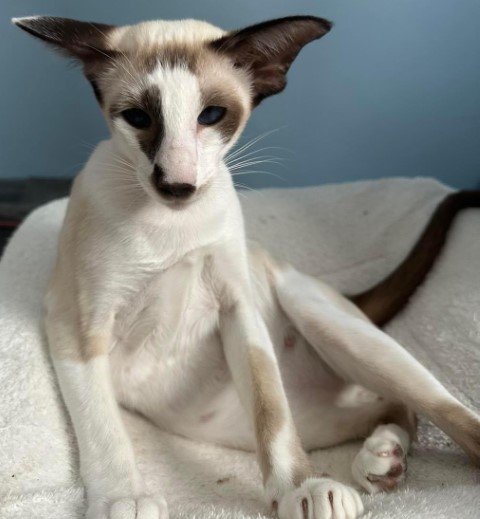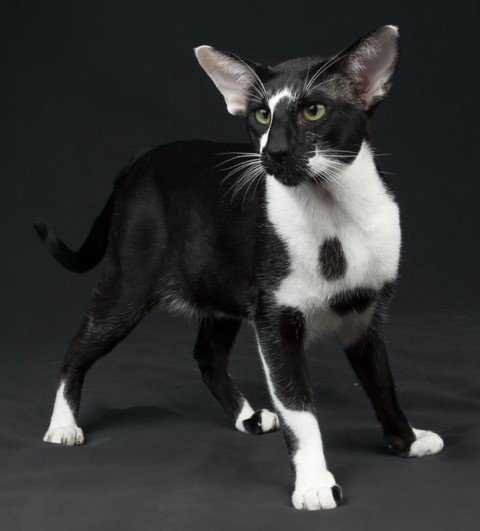This short article covers some of the common faults seen in Oriental bicolours, but for the purpose of brevity, the article is limited to faults surrounding the distribution of white on the Oriental bicolour ( 03 ).
Distribution of White
It is important when judging and reporting on Oriental bicolour cats that in addition to reporting on the cats type, confirmation, condition etc. that you also focus on the amount, and the distribution of white. Below is an extract from the Oriental bicolour standard of points.
The colour patches must cover not less than half but not more than two thirds of total body surface. The head must show a minimum of one third white, leading from under the chin to chest to lower abdomen. If the white on underside forms spots then there must be a clear continuous link between them, there must be no unlinked chest and/or belly spots. All four legs/feet must show white. The amount of white on the tail is immaterial. The coloured patches must be clearly defined with minimal “feathering” to the edges.
GCCF Oriental bicolour standard of points



When judging an Oriental longhair bicolour some allowances should be made for feathering as the long hair dictates some degree of inevitability when it comes to feathering.
The margin between the coloured and the white areas should be distinct but, due to the close-lying coat, may show slight ‘feathering’ of white and coloured hairs, particularly in the Longhaired varieties in which some allowance can be made. As in other Orientals and Siamese, there should be no scattered white hairs in coloured areas or scattered coloured hairs in white areas. Fine lines, sometimes only a few hairs in width, or distinct spots of white in coloured areas or colour in white areas are acceptable
GCCF Oriental bicolour standard of points
Some tips on your reports –
- Always say what the overall percentage of white is – e.g. in total this cat has approximately 45% white.
- Always say how much white the cat has to the head.
- Always say if the cat has white to all four legs.
- Always say if the cat has white on the chest and if it reaches the underbelly and if the white forms an unbroken line from chest down to abdomen.
- Oriental bicolours require over 1/3 total amount of white but not more than 1/2. If you have a cat that has less than 1/3 white then this is a withholding fault. If you have a cat that has over 1/2 white then the cat is incorrectly registered as bicolour, report on this fact and say what the cat should be registered as explaining why but do not withhold the award.
.
